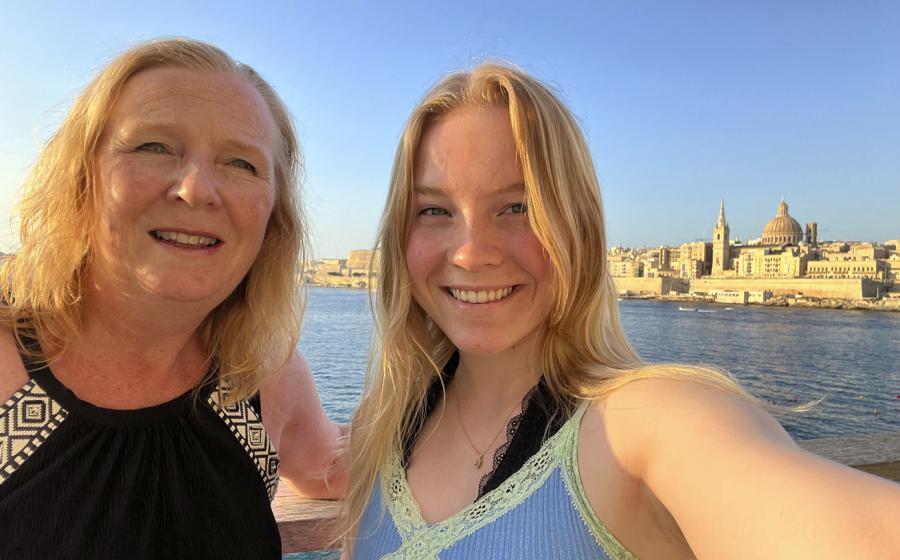Why the Scientific Community Should Harness the Power of Photography

Tim PetersA diver snaps a photo at Bonaire's Salt Pier during Marine Life Education Week at Buddy Dive Resort, a program that encourages citizen science.
The Power of Photography in Science
We live in a time when the word “science” calls to mind visions of lecture halls, white lab coats and sterile labs for many, yet scientists' work couldn't be more critical. In our political, social and literal climate, we need to bridge the rift between difficult-to-access journals and an uninformed public. This is where underwater photography comes into play.
After all, science and photography are complementary parts of the same puzzle. Why are our oceans intrinsically worth preserving? Science tells us why, but photography shows us. Science quantifies the extent to which global warming affects marine biodiversity, but photography qualifies it.
These days, however, science seems to stray from public interest. Much of today’s scientific scholarship gets lost somewhere on the path to the people who need to hear it most. Photography can help bridge the gap—it’s the art that transcends all cultural and linguistic barriers.
In this way, a five-second flurry of shutter clicks has the potential to disseminate information, invoke emotion, create empathy and ultimately inspire change all at the same time.
While photography’s role as art is clear, what’s perhaps overlooked is the crucial role it also has in the scientific process.
See more conservation news here.
Underwater photography has eliminated much of the literal pressure of water weight and diminishing air supplies, resulting in expanded scientific data collection.
Personally, I have used underwater camera systems to: assess the size, species and biomass of reef fish from photos captured in Honduras; quantifiably estimate coral cover in reef systems in Dominica; and even approximate sea turtle feeding rates in Bermuda. When you also consider the use of photography in large-scale scientific crowdsourcing projects to track marine megafauna, in deep-sea vessels to explore the oceans’ twilight zones, or even in citizen-science projects to monitor coral bleaching worldwide, you can begin to appreciate photography as a practical tool.
Ultimately, scientists and recreational divers alike are both responsible for more unity between the arts and sciences. Scientists must factor the general public into their research design and delivery. Everyone else must demand that results be made more accessible, understandable and relevant. I wholeheartedly believe in the untapped potential of cross-disciplinary efforts between science and photography. Both are critical players in the quest to preserve and revitalize our blue planet.
Time To Shine
Citizen-science projects that need photographers like you.
ID the Manta database
Individual manta rays have a unique pattern of spots on their ventral surface, so photos of manta bellies allow organizations such as the Manta Trust to collect critical information about manta migration patterns, reproduction and more. Visit mantatrust.org to submit your photos and contribute to the largest database of its kind.
Bleach Watch
Mote Marine Laboratory and Aquarium based the Florida Keys BleachWatch program on a similar system at the Great Barrier Reef to track the severity and extent of coral bleaching in the Florida Keys National Marine Sanctuary. Data from NOAA’s monitoring efforts in the park are combined with surveys and photos submitted by volunteer divers to help assess the health of the reefs, which allows for more informed conservation and protection efforts. Visit mote.org to learn more and submit a report online.
Volunteer Fish Survey Project
Savvy divers and snorkelers can contribute to REEF’s publicly accessible database—which is used by researchers worldwide—by submitting surveys online (reef.org). Photography improves the data even more, helping verify the accuracy of surveys and even working as verification for rare-species sightings.
Get Involved TMRC has a long-standing collaboration with Operation Wallacea, a U.K.-based biodiversity organization that uses volunteers to collect data on coral health and abundance from the reefs and lagoons of Tela Bay, and to quantify biodiversity. Through this collaboration, TMRC has worked with students and academics from more than 30 universities around the world, from the University of Oxford to Harvard. To get involved with the research at TMRC, go to opwall.com.










